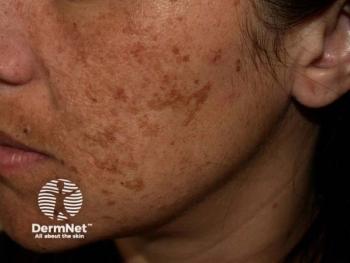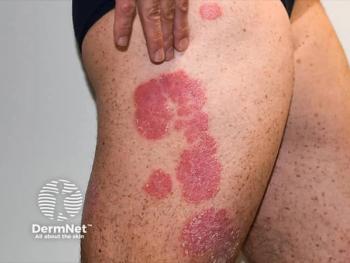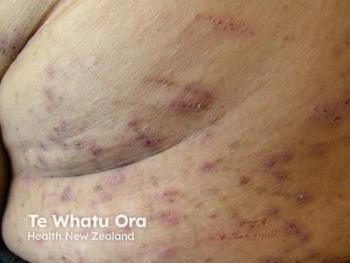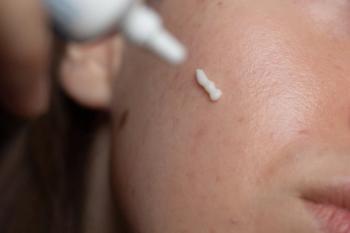
IL-23 Inhibitor Fails to Improve VASI in Pilot Trial
Key Takeaways
- Tildrakizumab showed no significant repigmentation in stable non-segmental vitiligo but was well tolerated with no serious adverse events.
- The study suggests IL-23 blockade may help maintain disease stability, aligning with hypotheses on chronic inflammation's role in vitiligo.
A pilot study evaluates tildrakizumab's safety and potential in treating stable nonsegmental vitiligo, highlighting the need for further research on IL-23 inhibitors.
Despite the chronicity and prevalence of vitiligo, therapeutic options for the condition remain limited in efficacy, accessibility, and patient adherence.1 A recent pilot study titled "Pilot Study of Tildrakizumab in the Treatment of Stable Non-Segmental Vitiligo," published in JEADV Clinical Practice, explores the utility of IL-23 inhibition via tildrakizumab in managing stable nonsegmental vitiligo—a direction that aligns with the evolving landscape of immunomodulatory therapy.2
Rationale and Study Overview
Biologic agents targeting key immune pathways have revolutionized the treatment of several autoimmune dermatologic conditions. The rationale for investigating tildrakizumab, a humanized IgG1 monoclonal antibody targeting the p19 subunit of IL-23, stems from mounting evidence implicating the IL-23/Th17 axis in vitiligo pathogenesis. Elevated IL-23 serum levels have been documented in nonsegmental vitiligo, suggesting its potential role as a therapeutic target.
This investigator-initiated, open-label pilot study enrolled 12 adult patients with stable, treatment-resistant nonsegmental vitiligo. Patients received subcutaneous tildrakizumab 200 mg once monthly for 24 weeks. The primary outcomes were changes in the Vitiligo Area Scoring Index (VASI) and Vitiligo Extent Score (VES), both validated metrics to assess disease burden and repigmentation.
Findings and Interpretation
Eight patients completed the 24-week trial. The study found a nonsignificant mean improvement of 1.15% in VASI (95% CI, −13.77 to 16.10%; P = .87) and a 13.80% mean improvement in VES (95% CI, −34.99 to 30.85; P = .89). No patient achieved the commonly accepted clinical threshold of 50% VASI improvement. However, researchers noted that 8 patients did demonstrate improvements in VES, surpassing the minimal important change and smallest detectable change values suggested in prior studies.
Importantly, the researchers stated that the treatment was well tolerated, with no serious adverse events reported. The most common mild adverse effects included upper respiratory tract symptoms and injection site reactions. Three participants withdrew due to perceived lack of efficacy, and 1 was lost to follow-up.
Clinical Relevance and Limitations
Despite a lack of statistically significant repigmentation, this study offers several important insights. Firstly, it affirms the safety of tildrakizumab in this patient population. Secondly, it suggests a possible role for IL-23 blockade in maintaining disease stability, given that no participants progressed from stable to active disease. This observation aligns with hypotheses that IL-23 may influence chronic inflammation more than acute disease progression.
However, the study has notable limitations. The small sample size, single-arm open-label design, and reliance on self-reported stability reduce generalizability and introduce potential bias. Additionally, the exclusion of patients with active vitiligo and the prohibition of combination therapy (eg, phototherapy) may have limited the opportunity to detect a more pronounced therapeutic effect.
Looking Ahead
This pilot study underscores the need for continued research into the role of biologics in vitiligo, particularly IL-23 inhibitors. The study noted that future investigations should involve larger, randomized controlled trials, include both active and stable disease stages, and explore combination regimens with established treatments like phototherapy. Moreover, a longer follow-up period may be necessary to assess the durability of any observed effects and evaluate potential delayed repigmentation.
In conclusion, although tildrakizumab did not yield significant repigmentation in this small cohort with stable vitiligo, the results support further exploration of IL-23 as a therapeutic target. The path toward biologic treatment of vitiligo remains in its early stages—but each data point, including those that do not meet efficacy expectations, plays a vital role in informing the next steps.
References
- Bergqvist C, Ezzedine K. Vitiligo: a review. Dermatology. 2020;236(6):571-592. doi:10.1159/000506103
- Lee H, Cowan TL, Huang C, et al. Pilot study of tildrakizumab in the treatment of stable non-segmental vitiligo. JEADV Clin Prac. doi:10.1002/jvc2.70113
Newsletter
Like what you’re reading? Subscribe to Dermatology Times for weekly updates on therapies, innovations, and real-world practice tips.


















